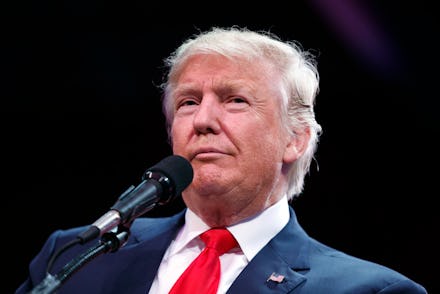Is Donald Trump's tax plan a hit with Republicans? Here's what we know.

During the first presidential debate in September, then-GOP presidential candidate Donald Trump said his tax-cut plan would be "the biggest since Ronald Reagan, and I'm very proud of it."
In fact, Trump's tax cut would dwarf Reagan's. Politico reported that same month that Reagan's 1981 cuts reduced taxes by $200 billion a year when adjusted in 2012 dollars, while the Tax Policy Center pointed out in October that Trump's proposal would slash taxes by about $6.2 trillion (while also ballooning the federal debt by as much as 20.9 trillion over then next two decades).
Even so, while Trump may take great pride in comparing himself to Reagan, not all conservatives would welcome his 2017 tax plan.
According to CNN Money, Trump's tax plan may be too expensive. Experts are now putting Trump's 2017 tax plan at between $6 trillion and $7 trillion. Meanwhile, Republican leaders in the House have proposed their own tax reform plan, which could cost about half as much as what the president-elect has proposed.
How both tax plans are alike
However, both proposals have a few key similarities. Like Trump's plan, the Republican blueprint shows a larger standard deduction and would reduce the existing seven income tax brackets to three, with rates of 12%, 25% and 33%. Both also promise to slash income tax rates and keep low rates for investment income, which tends to benefit wealthier Americans.
The Tax Policy Center estimates that under Trump's plan, those earning $700,000 would receive an average net tax cut of nearly $215,000 next year. The top 0.1%, those who make more than $3.7 million, would receive a tax cut of over $1 million.
But not everybody seems to be on board with his plan. In a CNBC interview, Steven Mnuchin, Trump's pick to head the Treasury Department, said, "There will be no absolute tax cut for the upper class," and "when we work with Congress and go through this, it will be very clear. This is a middle-income tax cut, and the child care credit is a big aspect of this," he added. But according to Forbes, middle-income families — those who earn between $48,000 and $83,000 — would receive 6.7% of the total tax cut, whereas the top 0.1 % would get about one-quarter of the total benefit.
Who could Trump's proposal hurt the most?
In addition, Trump's plan would not play well for single parents, families with a large number of children and single people with no children. They will end up paying more under Trump's blueprint than they do today, according to Forbes.
But as Horizon Investments' chief global strategist Greg Valliere told CNN Money, "Just because everyone buys into the premise of tax reform doesn't mean they agree on all the details."
For now, we must hope for the best and prepare for the worst.